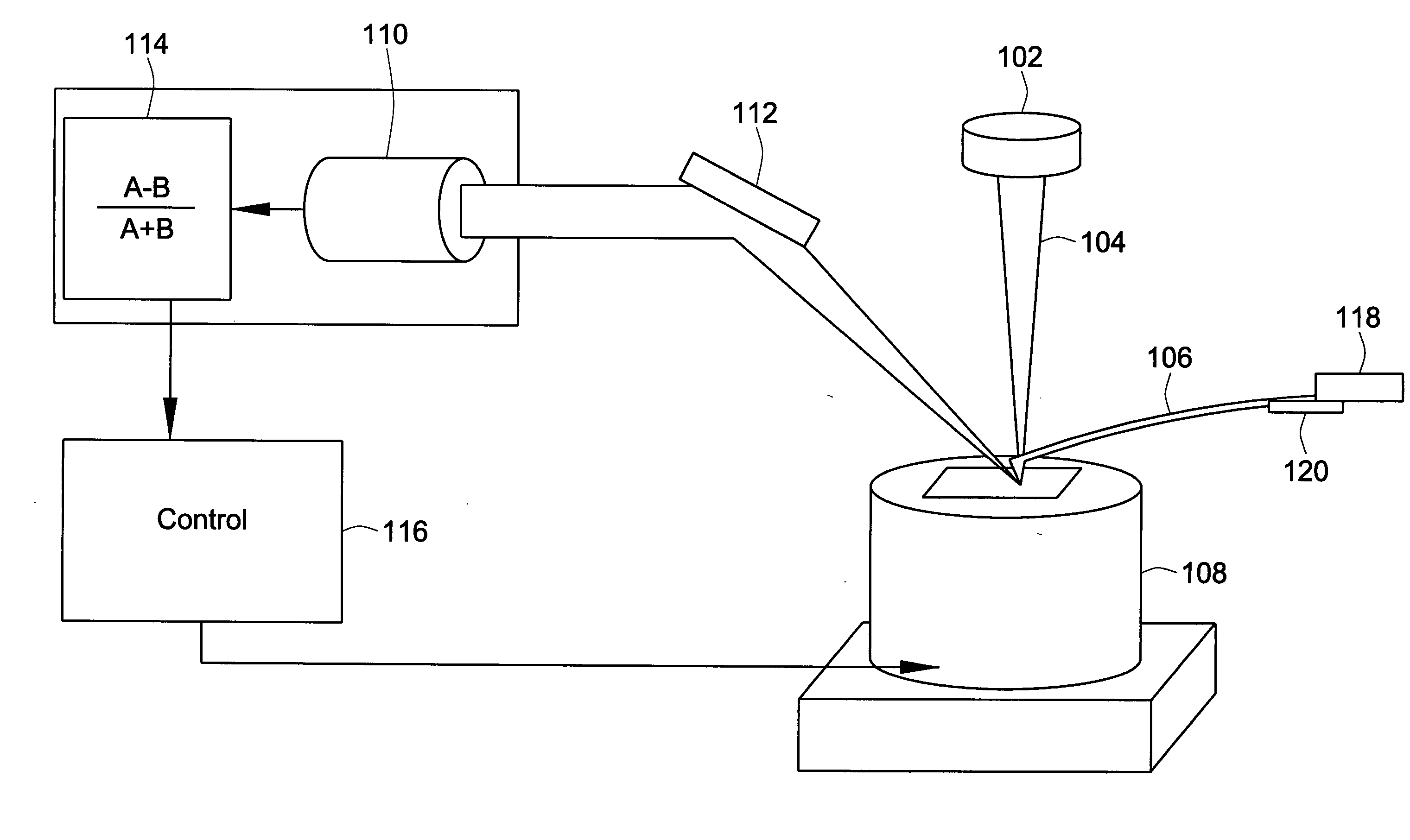Method to transiently detect samples in atomic force microscopes
a technology of atomic force microscope and sample detection, which is applied in the direction of mechanical roughness/irregularity measurement, measurement devices, instruments, etc., can solve the problems of inherently slow present methods, current measurement techniques do not meet the aforementioned high precision and bandwidth requirements, and considerable challenges , to achieve the effect of ultra-fast methods
- Summary
- Abstract
- Description
- Claims
- Application Information
AI Technical Summary
Benefits of technology
Problems solved by technology
Method used
Image
Examples
Embodiment Construction
The invention provides a method to utilize the transient behavior of the cantilever oscillations for sample imaging and detection in atomic force microscopy. The transient based methods of the invention improve performance of interrogation speeds by approximately two orders of magnitude over steady state based methods. Fundamental limitations due to high quality factors are removed using the transient part of the cantilever motion. A model of the cantilever is used to build a Kalman Observer that is used to estimate the state of the cantilever dynamics. The tip-sample interaction is modeled and corresponding data during the transient state of the probe is analyzed using generalized likelihood ratio test to detect and probe the sample profile. The use of the transient data results in sample detection at least ten times faster than using the steady state data based methods.
Turning to the drawings, wherein like reference numerals refer to like elements, the invention is illustrated ...
PUM
 Login to View More
Login to View More Abstract
Description
Claims
Application Information
 Login to View More
Login to View More - R&D
- Intellectual Property
- Life Sciences
- Materials
- Tech Scout
- Unparalleled Data Quality
- Higher Quality Content
- 60% Fewer Hallucinations
Browse by: Latest US Patents, China's latest patents, Technical Efficacy Thesaurus, Application Domain, Technology Topic, Popular Technical Reports.
© 2025 PatSnap. All rights reserved.Legal|Privacy policy|Modern Slavery Act Transparency Statement|Sitemap|About US| Contact US: help@patsnap.com



